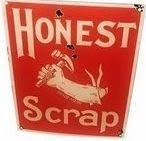Saving the Sage Grouse – NYTimes.com.
The following quote from The New York Times is a letter about NOT putting the Gunnison sage grouse on the Endangered Species Act, reminiscent of the nineteenth century effort to eliminate the buffalo along the transcontinental railroad routes to California.
Re “Newly Discovered, Nearly Extinct,” by John W. Fitzpatrick (Op-Ed, March 7):
The proposed federal listing of the Gunnison sage grouse under the Endangered Species Act would devalue state and local efforts already under way to conserve the species while simultaneously undermining energy development — both renewable and conventional — in the habitat region.
A federal listing would affect wind energy projects in the Monticello, Utah, area, oil and natural gas production in San Miguel County, Colorado, and potential geothermal development in the Gunnison Basin, Colorado. Agricultural interests would also be greatly affected, as 90 percent of the bird’s habitat sits on federal and private land grazed by domestic livestock.
Energy producers — from wind to natural gas — and local landowners are already working with state agencies to provide protection of the bird, while also providing domestic energy and hundreds of jobs. Placing the grouse on the endangered species list will not only undermine these efforts but will also halt energy development in the proposed region — a devastating, job-crushing, unintended consequence.
BARRY RUSSELL
President, Independent Petroleum
Association of America
Washington, March 8, 2013
From a post on my blog, Poprock Hill, February 22, 2010.
Fat-Takers
Buffalo Skulls at Michigan Carbon Works (1895) Detroit Public Libarary
The Sioux have a name for the white men. They call them wasicun–fat-takers. It is a good name, because you have taken the fat of the land. But it does not seem to have agreed with you. Right now you don’t look so healthy–overweight, yes, but not healthy. Americans are bred like stuffed geese–to be consumers, not human beings. –John (Fire) Lame Deer, in “Lame Deer Seeker of Visions: The Life of a Sioux Medicine Man,” p. 44.
Life is out of balance when people trespass into nature with two notions: there is a superabundance of resources and nature can be harvested because man has dominion over nature. Neither are true. What teachers instructed the men in hats and suits to stand arrogantly on top of a carefully-stacked pile of buffalo skulls to be ground into fertilizer? Life is out of balance when the photograph above was taken, the men standing on skulls and the teachers and preachers that taught that man has dominion and rights to harvest indiscriminately. Lame Deer calls such people fat-takers and they are not human beings. Life is still out of balance when coyote hunts are contests for pelt count and young persons shoot prairie dogs for blood sport.
Photograph above of John (Fire) Lame Deer (1974) Heyoka Magazine, November 2006.
So much to learn by going and sitting down in the woods.
So much to learn by walking the mesa.





















